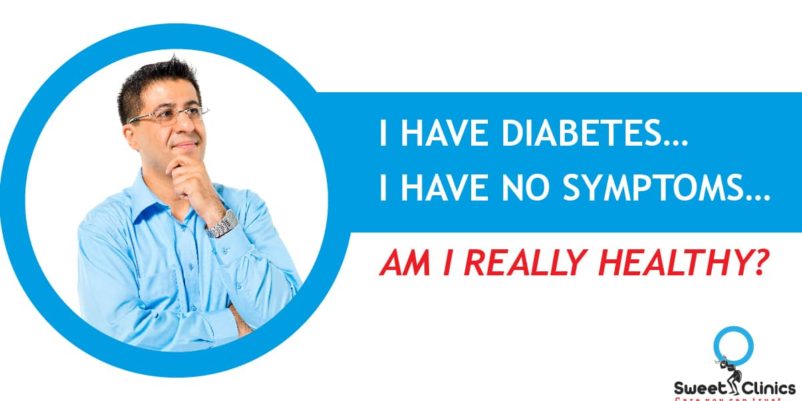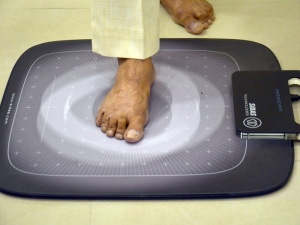
A Diabetics guide to fasting – by A Diabetologist & Dietician
For Diabetics, managing diet in normal day-to-day life is no child’s play; add to that the twist of fasting is an even very risky affair. Diabetics in general are advised not to do fasting. However, if you still want to venture into fasting there are some important precautions & guideline which diabetics need to follow. As we have highlight in this article. First, we talk about who absolutely cannot do fasting & who can. Followed by the right way to plan fasting with the help of your diabetologist and finally what a diabetic should eat and when. So, let’s get started
Diabetics who should absolutely and Definitely NOT do Fasting
- Diabetic people who are on insulin treatment should not even think about fasting as they need constant monitoring and any drop or increase in blood sugar can prove fatal.
- Type 1 diabetics who are inherently dependent on insulin should not fast, sorry but its for your own good.
- Diabetics who have other medical conditions like cardiac, renal problems need to avoid fasting aswell.
- Diabetics who are at a risk or prone to both hypo & hyper glycemia should not do fasting.
- Senior Citizens who are diabetic are advised not to.
Diabetics who can do fasting under the observation of a diabetologist:
Diabetics who fall in the following category of patients can think of fasting but only if their diabetologist clears them to do so:
- Diabetics who have good control on their blood sugar and are not on any high dose of medication can opt for fasting.
- Diabetics who do not have much fluctuations in their sugar levels can think of fasting.
- Diabetics who are not at a high risk of hypo-glycemia can fast.
How to go about fasting if you are diabetic:
- Consult your Diabetologist & get your medications in order: As there will be a change in the food intake there will be a significant change in the blood sugar levels compared to your normal routine. Hence, the dosage of diabetes medications needs to change according. For example, your main medication needs to be shifted according to the time when you will have the proper fasting meal of the day (details below). This change can only be prescribed by your treating diabetologist.
- Monitor your Blood Sugar Religiously; Diabetics should check their blood sugar at-least 3 times a day or whenever they feel symptoms of hypoglycaemia. Signs of hypoglycaemia include feeling weak and giddy, having palpitations. If they find that the blood sugar is below 80 you need to break your fast and have something to eat ASAP! Like a fresh fruit juice!
Managing Diet when fasting if you are diabetic:
The critical challenge for diabetics when fasting is to make sure they don’t go into hypoglycaemia nor should they suffer from hyperglycaemia. For example, Some fasting foods like sabudana (Tapioca) which has a higher glycaemic index if taken in excess can trigger hyperglycaemia While not eating anything for more than 2-3 hours can cause hypoglycaemia. Hence, as suggested earlier its critical to check your blood sugars actively when fasting.
So What should a typical fasting diet include during Navratri;
Diabetics cannot do the fasting where no food or water is allowed during day, please don’t. Fortunately fasting in Navratri allows most of us to have fruits and some sattvic foods during the course of the day. it is important to select foods which have a lower glycaemic index for the reason stated above. Nonetheless you can have other foods with higher glycaemic index in moderation aswell so lets dig in
- Foreword: Diabetics must make sure that they have something every 2 hours to keep their sugar level maintained. Having Mid-meals like Fresh fruit, Milkshake, Chaas, Shikanji, kheer, Shakarkandi ki chaat or Sabudana wada with dahi can be a good option. Keep the portions balanced depending on your physical activity.
Stay Hydrated: Diabetics should have atleast 3 litres of water in a day.
Avoid Caffeine – Tea Cofee – Tea can often cause acidity leading to vomiting and other complications.
- Just after waking up– Early morning are critical as the blood sugars in general are low so diabetics need to make up for it else can go into hypoglycaemia. Start the day by having either of these.
- Any Fresh fruit that you like or may have
- Handful of nuts
- Overnight soaked almonds with kesar
- Breakfast– This meal should ideally help your regain your blood sugar levels and also keep you going for the day hence something like
- Singhare ke pakode
- Sabudana khichdi
- Sweet potato with dahi
- Alu Ki kheer
- Chana poori and halwa (Yes but on last day! With some moderation)
- Lunch – For lunch you can have.
- Rajgira or kuttu or singhare atta ki roti with Alu or arbi sabzi
- Makhane ki sabzi
- Kuttu ki kadhi with samo chawal
- upasacha thalipeeth
- Dinner – For fasting diabetics, skipping dinner is not an option. Dinner needs to keep your sugars up all night so you the diabetic can stills stand in the morning. A proper fasting meal would be ideal or you could try
- Samo chawal with dahi
- Jhangora kheer
- Paneer ki sabzi with kuttu or singhare or rajgira or banana flour ki roti
So have a happy & safe fasting! and remember If you are unsure of how to go about this you can contact your treating diabetologist or contact us 9167444888 on and our inhouse diabetologist & Diet consultant will guide you.
This Articel has been written by our Diabetologist Dr. Vinod Methil & Diet Consultant Prateeksha Kadam.

I have diabetes… I have no symptoms… Am I really Healthy?
We Human’s have a peculiar attitude when it comes to our health. We often tend to ignore a minor pain, fever or scratches. We often believe that our body will heal itself… In most cases that just what our body does. However, the same is not the case when it comes to Diabetes. Diabetes is quite rightly called the Silent Killer and for good reason. Diabetes does not allow body to heal in a normal manner. Hence, diabetic patient cannot & should not take even a minor injury lightly.
Generally, Diabetic patient only check their sugar test (fasting & post lunch sugar). If their sugar parameters are in the normal range, they believe they are doing fine and go about their routine, without a care in the world. It gives them a false sense of security, that their diabetes is in control and consequently they will not suffer from any other diabetic complication. Unfortunately, that is not the case and such diabetics should still go for a complete diabetes check-up atleast once a year while keeping a regular follow-up with their Diabetologist.
Take the case of one our regular patients, who had her blood sugar in check had just done her annual Heart Rate Variability (HRV) test at Sweet clinic. The test highlighted that she has a coronary condition. Following which our Diabetologist further analysed her for diabetes related coronary symptoms and eventually suggested to undergo an angiography. Unlike a normal person who would have got chest pain & unexplained sweating, a diabetic patient with a heart condition only has some breathlessness and a feeling of heaviness. Which is the symptoms she showed. Her angiogram showed a heart block and she had to undergo an angioplasty. This patient’s adherence to her diabetologist follow-up and annual testing protocol helped save her life. Similarly, many diabetics can save themselves from life-threating conditions by simply showing up for their diabetologist consultation and regular tests.
One must understand that diabetes can affect heart, eyes, kidneys, blood vessels, feet, brain or any other organ without any clear symptoms. It is still a mystery why in some diabetics, it affects the heart while in others affecting a different organ, some studies suggest it related to a person’s genetics.
Nonetheless, what we know for sure is that a diabetic patient generally has a higher blood sugar level than what is ideal for the human body. This increase in blood sugar first starts affecting the minute blood vessels called capillaries by making them thinner. These are present in all organs of the body by making them thinner. The first change occurs at the minute level of these capillaries.
It is through the capillaries that each organ gets their oxygen & nutrients and also send their waste products to the blood to be excreted out of the body later.
Hence, during the initial stages of any diabetic, complications are symptom less. For example if kidney is getting affected by diabetes, at the onset, the person will have no complains whatsoever. Even the blood marker test results (Kidney Function Test -Blood Urea & Creatinine) will be within acceptable limits. This happens because kidney, like a good soldier, will try it’s best to maintain normal functionality. Its only when the kidney cannot sustain its normal functioning that the blood markers show a spike. This is when most diabetics will start witnessing some uneasiness or pain. Nonetheless, these changes take place at a very slow rate and warning signs can be identified before any major change in the organ takes place. For example, keeping a check on the urine protein test (micro-albumin test) can help a diabetologist know that the kidney is getting stressed (even before the patient experiences any symptoms) and take necessary corrective steps to save the organ from further damage. Hence, It is important for any diabetic to go for a complete diabetes check-up.
Similarly, diabetic retinopathy which is known to cause irreversible damage to the eye, even blindness in some patients can be prevented by a simply going for an annual diabetes specific eye test …
Hence, a diabetic patient can never be too complacent and should only consider normal blood sugar levels with a pinch of salt. They should visit their diabetologists regularly and get those specific tests done to be extremely sure that diabetes is not affecting any of their other organs adversely.
Based on our experience of treating more than 3000 diabetes patients, we at Sweet Clinics have introduced the Sweet Secure and Sweet Shield, complete diabetes care programs that make sure each and every early marker for diabetic complication is measured. Our diabetologist and super specialist doctor team are always available to help our patients live a healthy & happy life.

Diabetes & Diwali
Diwali and Diabetes
Diwali the festival of lights is here. It’s also the time when food is in abundance especially sweets and offered to all. So with the wealth of rich food available it can be very taxing time for a diabetic to keep his blood sugar in control. A maximum number of diabetics come with haywire blood sugars post Diwali.
So for those of us whom will power does not come easily here are some tips for enjoying sensible eating at Diwali.
Commit yourself to a food plan. It is very easy to get carried away by what is on the table .To reduce this from happening plan how much you intend to eat and what to eat and make a point sticking to the meal plan. Keep to your routine meals as much as possible as it will prevent unnecessary snacking. Avoid feeling hungry for long. When you are hungry you tend to over eat. One way to avoid being ravenous is to break the delay. Protein and non starchy vegetables based premeal snacks are a good choice as they are filling and slowly broken down.
Have a glass of water before eating, it’s a very effective way of reducing your food intake and reduces appetite.
Have food in a small plate. It gives a fuller look with less amount of food. Again base your meals with non starchy vegetables .Make sure vegetables account for a good portion of your plate.
Eat gradually and slowly. Eating with family is a nice occasion but if you are a fast eater it can make you tempted for additional helpings and adding to your overall calorie intake.
Don’t feel guilty or shy about turning offers down. Any food you eat is going to end in your blood and so don’t feel shy about turning food down especially the sweet ones.
Go very easy on the sweets. One can be forgiven for indulging every once in a while. So if you cannot resist the sweet, keep the serving small and sensible. Once again apply the rule about eating gradually.
If temptation is too much to have a sweet dish, try fresh fruits. Fresh fruit mixed with yoghurt and frozen can be a good replacement for the Rabidi or Jalebi or ice cream. Try using sugar free sweeteners in a limited amount in your sweets but remember every thing has calories and just because you have used artificial sweeteners does not give you the liberty to have unlimited amounts.
After and between meals put food under cover. Food that is exposed grabs the eye tempting to small unwanted indulgency .Apply the rule out of sight is out of mind.
Try to increase your physical activity as this is a good way of utilizing those extra calories that you may have indulged in.
Remember to take your medications .With family and friends around and the excitement of festival should not make you miss your insulin shot or regular medications.
Continue regular checking of your blood sugars to make you aware of your indulgences,
.
Finally Diwali is not just about sweets, it’s about family and friends. Enjoy your time with family doing things that you love the best.
Have a happy and safe Diwali…………….Dr Vinood Methil.
Eye Health & Diabetes
What is Diabetic Retinopathy?
Diabetic retinopathy is an eye disorder caused by long standing diabetes. It affects inner eye called retina. Diabetic retinopathy can affect all diabetics and increase the risk of blindness if it is left untreated.
What are the symptoms of Diabetic Retinopathy?
Early retinopathy without symptoms
Blurred vision
Double vision
Eye floaters
What are the risk factors for developing Diabetic Retinopathy?
Uncontrolled blood sugars
High blood pressure
Protein urea
Can Diabetic Retinopathy be prevented?
Yes, Good glycemic control and regular eye check up [Fundoscopy] can detect diabetic retinopathy at an early stage. Through Fundoscopic examination inner eye[Retina] can be visualized in detail and suitable treatment can be recommended. This is the most accurate available examination of retina.
Why is it required to undergo Fundoscopy in Diabetes?
Diabetes affects inner eye[Retina].Routine eye check up cannot reach and visualize retina. Fundoscopy is the only method by which we can visualize retina and the surrounding vasculature.
Medical conditions like retinal hemorrhages, retinal detachment can be detected through Fundoscopy.
Diabetic Nephropathy
What is Albumin Creatinine Ratio [ACR]
It is ratio of albumin and creatinine in urine excretion.
What is the importance of ACR in management of Diabetes?
Raised ACR is an indicator of Kidney dysfunction in Diabetes. Normally no protein is excreted in urine. Presence of protein in urine without any Urinary Tract Infection is a indicator of Kidney pathology like Diabetic or Hypertensive Nephropathy.
ACR is the most accurate and preferred method of detecting Diabetic Nephropathy
What is the normal level of ACR?
Less than 30mg/g is the normal level
What is the ideal frequency of doing ACR levels?
Once a year
How can I reduce my ACR levels?
- Controlling blood sugar & blood pressure levels
- Diet control
Contact us
Manage your Diabetes with best in class one stop diabetes management clinic in Navi Mumbai
Diabetic Foot
Commonest complication of Diabetes
Foot ulcers are a common complication of poorly controlled diabetes, forming as a result of skin tissue breaking down and exposing the layers underneath. Sometimes it affects your feet bones. Due to development of neuropathy and vasculopathy, diabetic foot is more vulnerable for injuries, hence all diabetic patients need to take uttermost care of their feet. Diabetic patients are prone for fungal infections in web spaces, corns, callus, even small shoe bite can lead to foot amputations.
Proper foot care routine like self examination of foot , proper skin moisturization and well fitted shoe wear can save you from foot problems.
At our diabetic foot clinic , we have latest technology available to detect smallest change in foot architecture and vasculature. Following are the technology details
Biothesiometer

Loss of sensation due to neuropathy is the major cause of painless injuries to the feet. Hence early and accurate detection of sensation loss due to neuropathy is the best way to protect the feet from amputation. This is done by Vibratory Perception Test which is performed at a state of the art easy to operate Digital Vibratory Perception Threshold (VPT) Analysis System.
Podia Scan [Prescam]

This instrument produces Instantaneous and permanent high resolution colour image of the pressure distribution across the plantar surface of the foot. It can pick up slightest change in the pressure distribution .This equipment catches pressure change in static as well as dynamic state and produces mean pressure of around 300 foot images. By using this Podiatrist / Footwear designer can develop a suitable foot ware for the patient by off-loading the pressure points and ultimately save the limb.
Vascular Doppler

A common device for circulatory system testing, a Vascular Doppler examines the veins and arteries in the human body to check blood flow. SMARTDOP 30EX The Smartdop 30EX is a compact bidirectional vascular Doppler with automatic cuff inflator and computer interface. It automatically calculates Ankle Brachial Index and Toe Brachial Index results quickly and accurately. It has a real-time waveform LCD and integrated printer for documentation.
Thermal Scan

Detecting subtle changes in skin temperature distribution in diabetic-at-risk foot and is capable of early detection diabetic-related peripheral neuropathy and vascular disorders.
We also have customized footwear for Diabetic patients and offer wound dressing and nail cutting services for Diabetic patients . We have best Diabetic Foot Clinic in NAVI MUMBAI
Next Steps…
Sweet Clinics is the only Comprehensive Diabetes Care Clinic in Navi Mumbai.
Get in touch with us.
World Diabetes Day – 2017
On this World Diabetes Day,
let us Pledge to fight Diabetes & live a Healthy Life .
Join us on Sunday, 19th November
for interactive educational event hosted by Sweet Clinics

